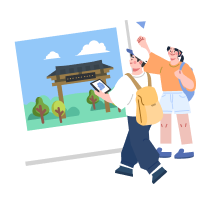Not long ago the film The Medium (랑종) was released, and it has quickly become a bit hit in South Korea.
The Thai-Korean horror film tells the story of a Thai shaman family whose daughters are destined to work as mediums for a local god.
The movie follows the character Nim, a woman who became a shaman instead of her older sister Noi, who resisted becoming a medium.
However, Noi has a daughter, and Nim starts to realize that her niece might be possessed by something.
Directed by Banjong Pisanthanakun and Korean director Na Hong-jin, shamanism is a major theme in the movie. This is a practice that exists to this day in both Thailand and Korea.
In this article, we will take a look at the Korean shaman, also called mudang, to find out what they are and what they do!
What Is A Mudang?
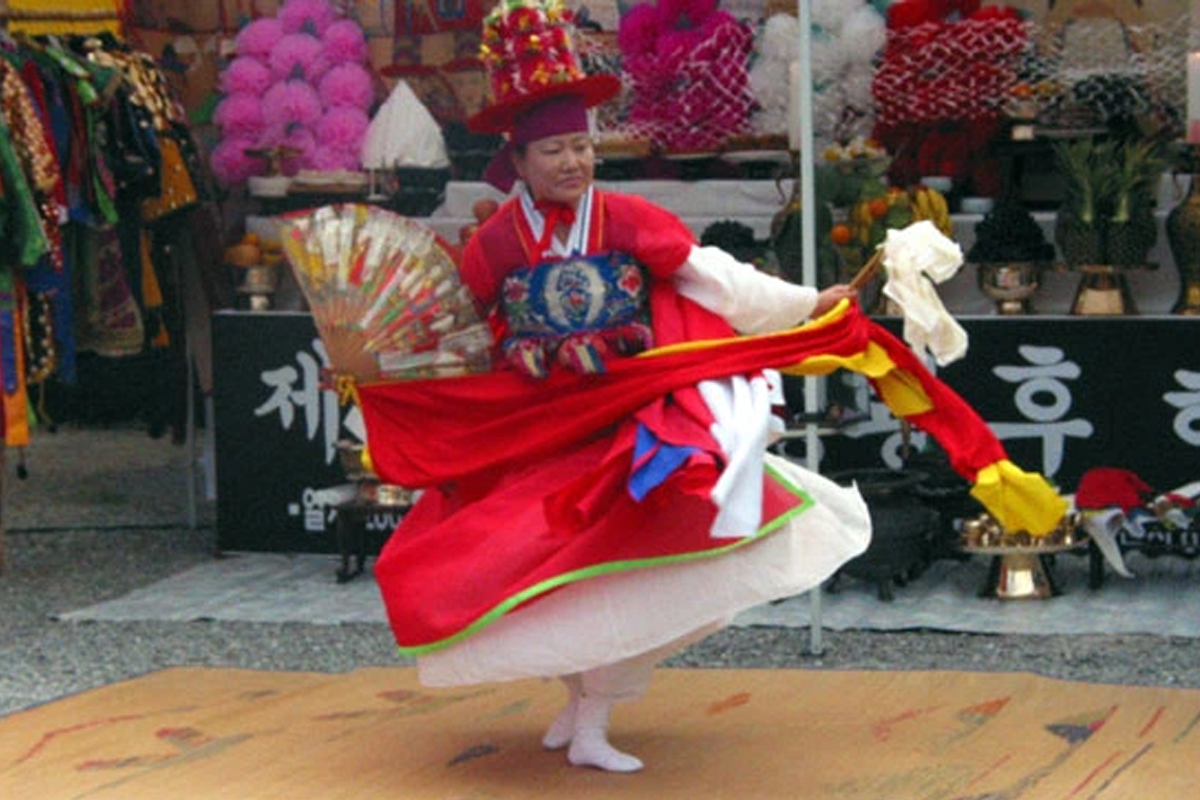
A mudang (무당) is a form of a shaman priest or priestess who works as a medium between spiritual beings and humans. Having performed a rite, a spirit descends on the mudang to speak to humans using their body.
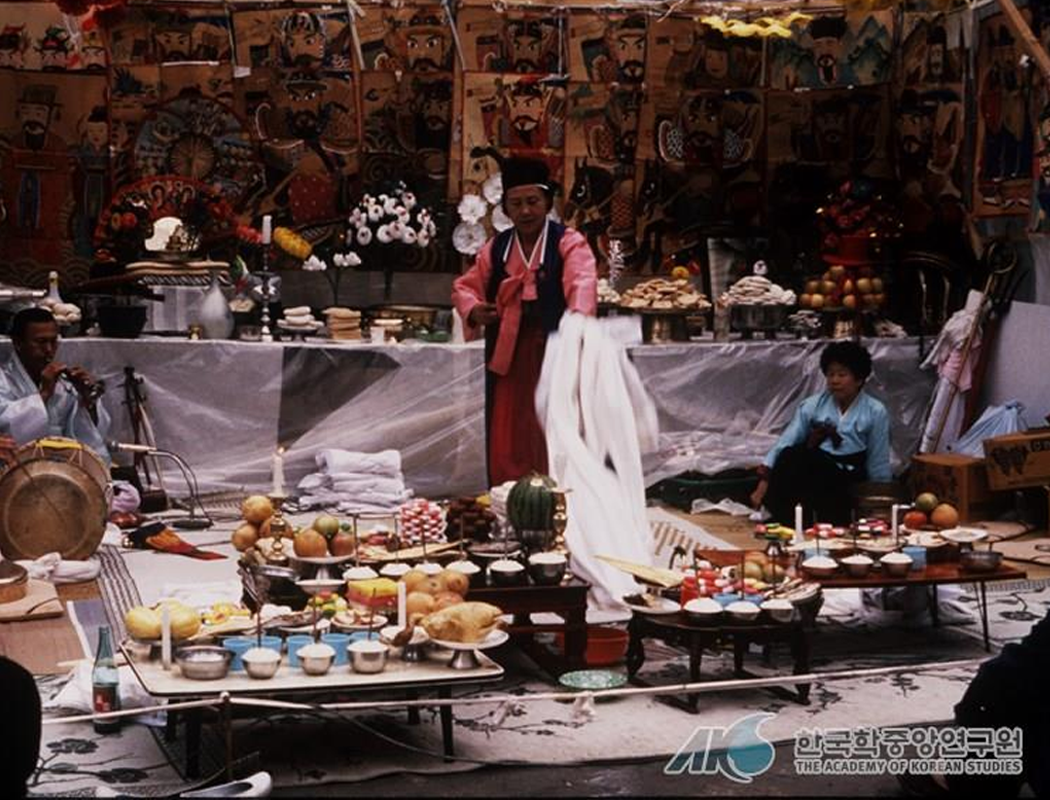 Source: 한국학중앙연구원
Source: 한국학중앙연구원
There is no one God within the shamanistic belief. Instead, depending on region, time and ability of the mudang, many different gods and spirits are worshipped.
Mudangs are known to work as mediums for local gods, ghosts, and spirits of ancient ancestors.
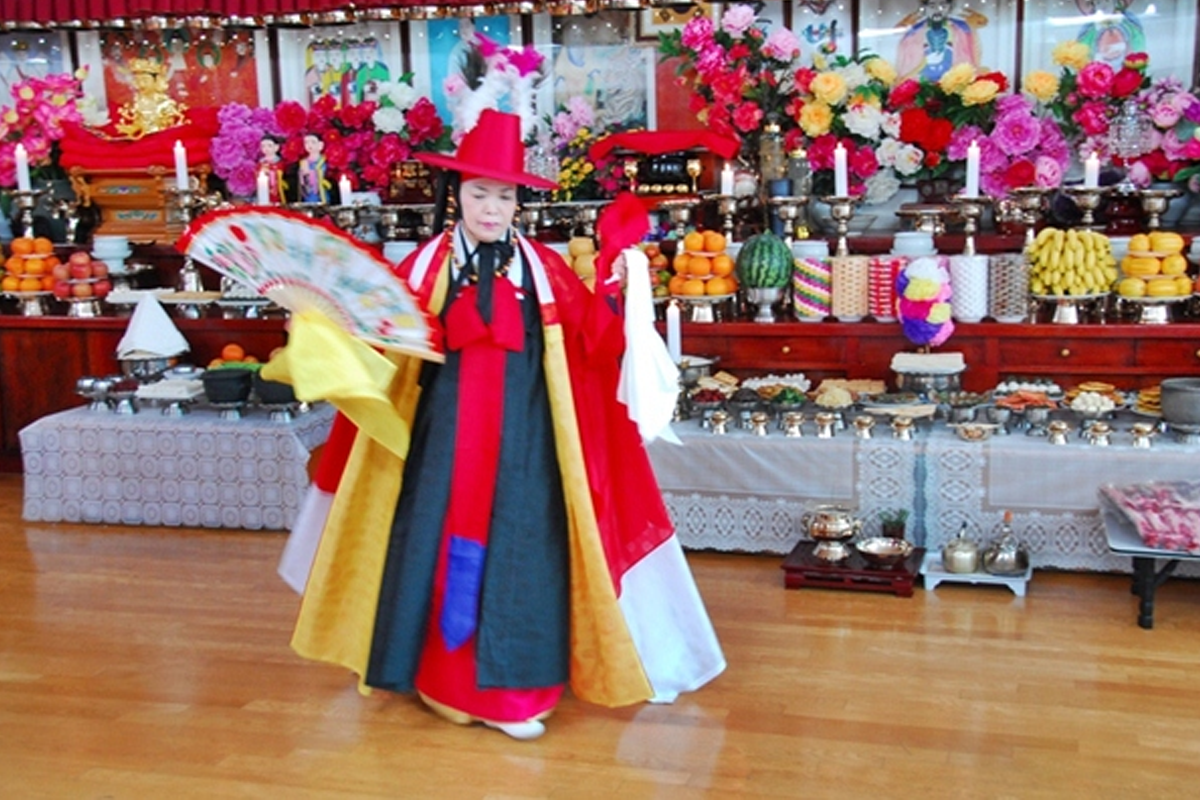 Source: Oh My News
Source: Oh My News
A mudang originally referred to a female shaman, whereas male priests were called baksu (박수) or baksa (박사).
These days, all shamans are referred to as mudang, although most will associate the word with a female priestess.
The Work Of The Mudang
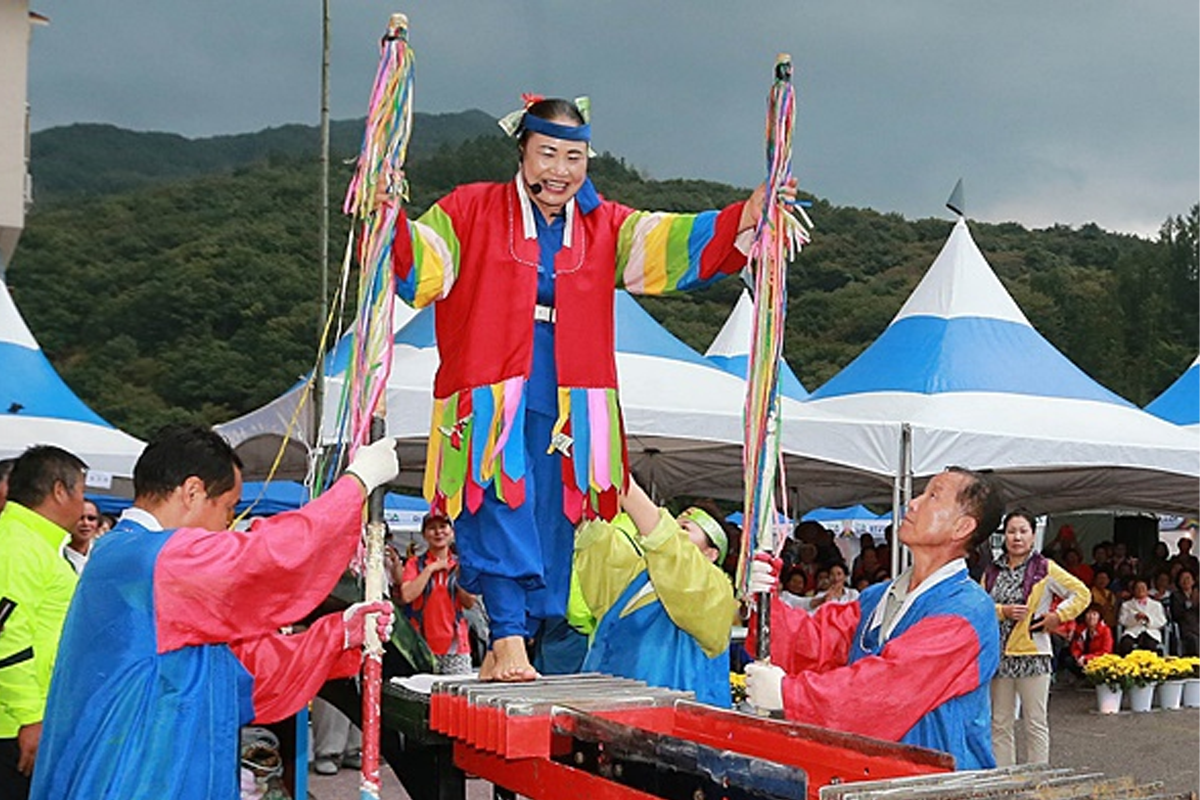 Source: Oh My News
Source: Oh My News
The ritual performed by a mudang is called gut (굿) in Korean. When performing this rite, the shaman offers sacrifices to the gods and spirits, praying for good fortune through various performances.
These performances can be quite diverse: dancing while wearing colorful fabric, casting spells while sitting down, or dancing barefoot on top of sharp blades (called jakdu or 작두).
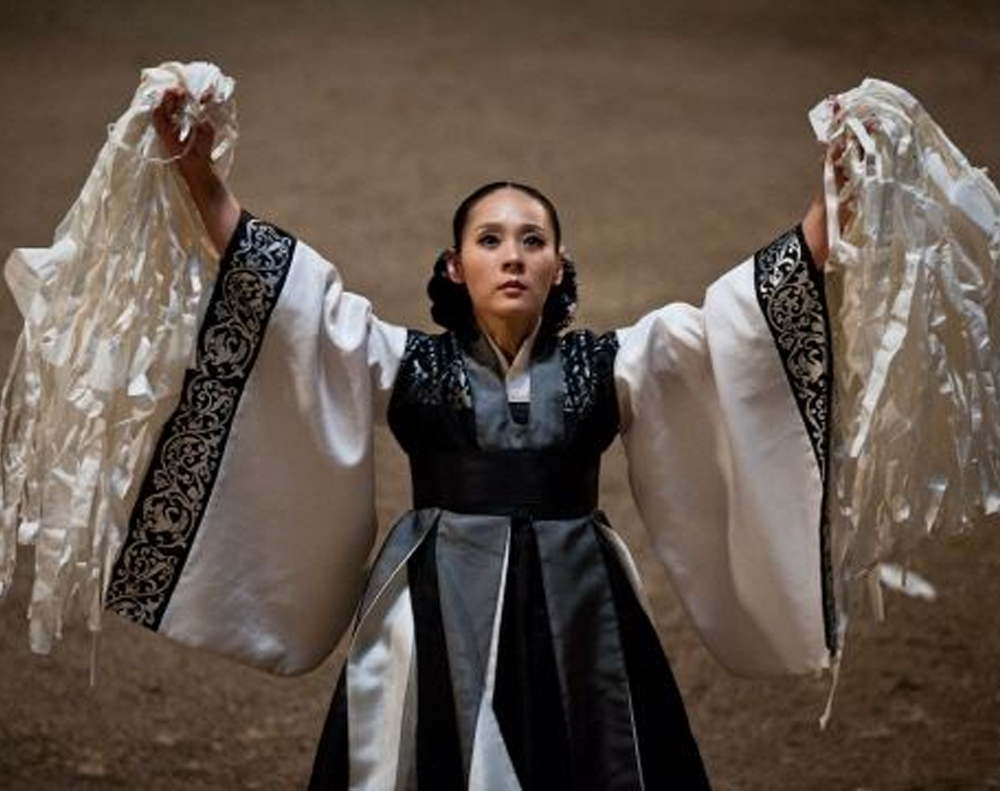 Source: mbc
Source: mbc
There are many different types of gut rites, each serving a different purpose.
The rite that a mudang will perform on behalf of the country or for a king is called nara gut. In the drama Moon Embracing the Sun, the mudang Nok-yeong can be seen performing this kind of gut.
Another rite, the cheonshin gut, is performed for the prosperity of a family or a business.
In addition to these, there are also rites such as jinhon gut (praying for the well-being of the dead), seongju gut (praying for the good fortune of a family), and byeong gut (praying for the sick).
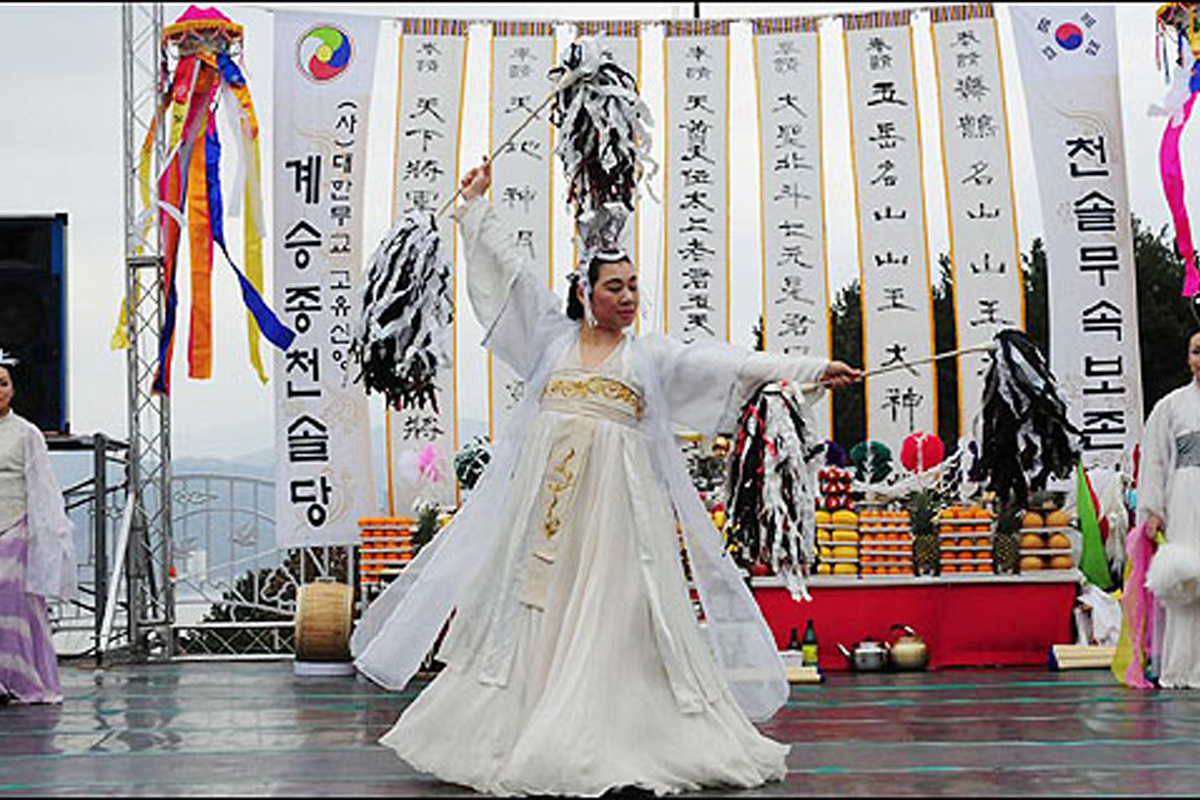 Source: Oh My News
Source: Oh My News
These days, Koreans split into two camps regarding the rites of a mudang: those who believe that it is nothing but superstition, and believers who think that they make a difference.
However, most agree that the rites and traditions should be preserved. Although shamanistic belief is not as widespread as it used to be, gut rites are still performed throughout the country.
The rituals also constitute the main source of income for mudang shamans. There is no set price for the performances, but popular shamans are said to receive around 10 million won per rite.
History Of The Mudang
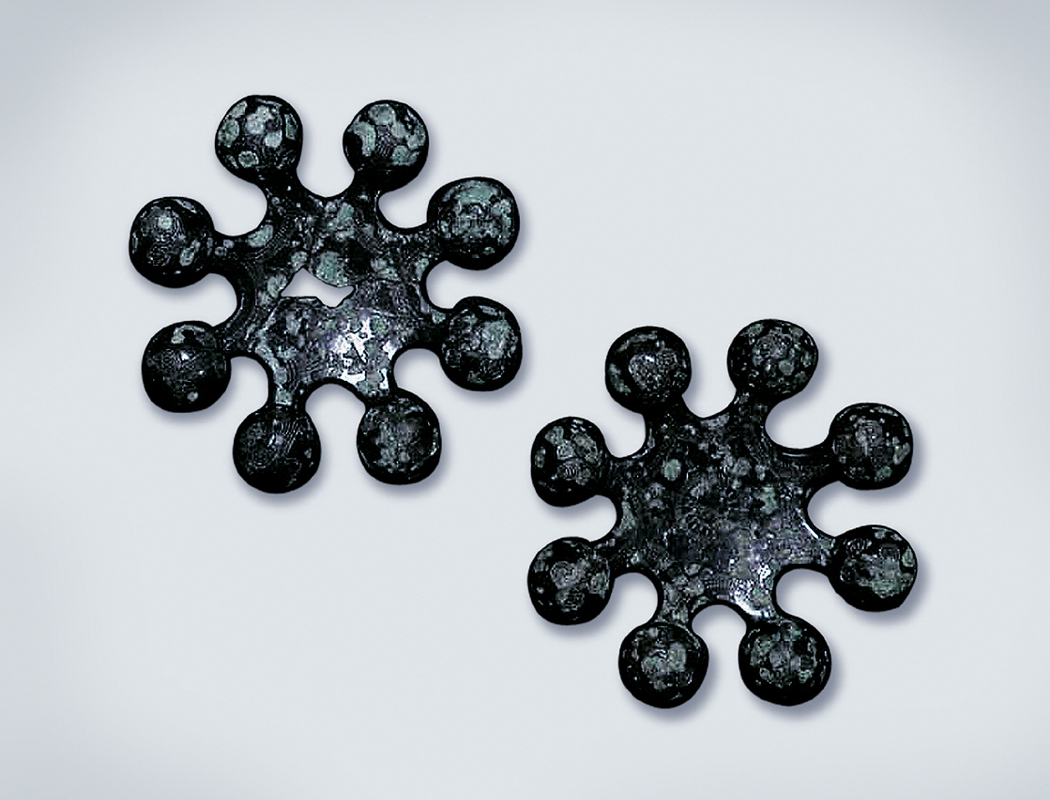 Source: Cultural Heritage Administration
Source: Cultural Heritage Administration
There is evidence that mudang shamans existed already during the Gojoseon period, the first Korean kingdom on the peninsula.
Ceremonial tools used by mudangs that date back to this era have been found, such as bronze bells and bronze mirrors.
This was a time when politics and religion were not separated, and the political leader also played the role of a religious priest.
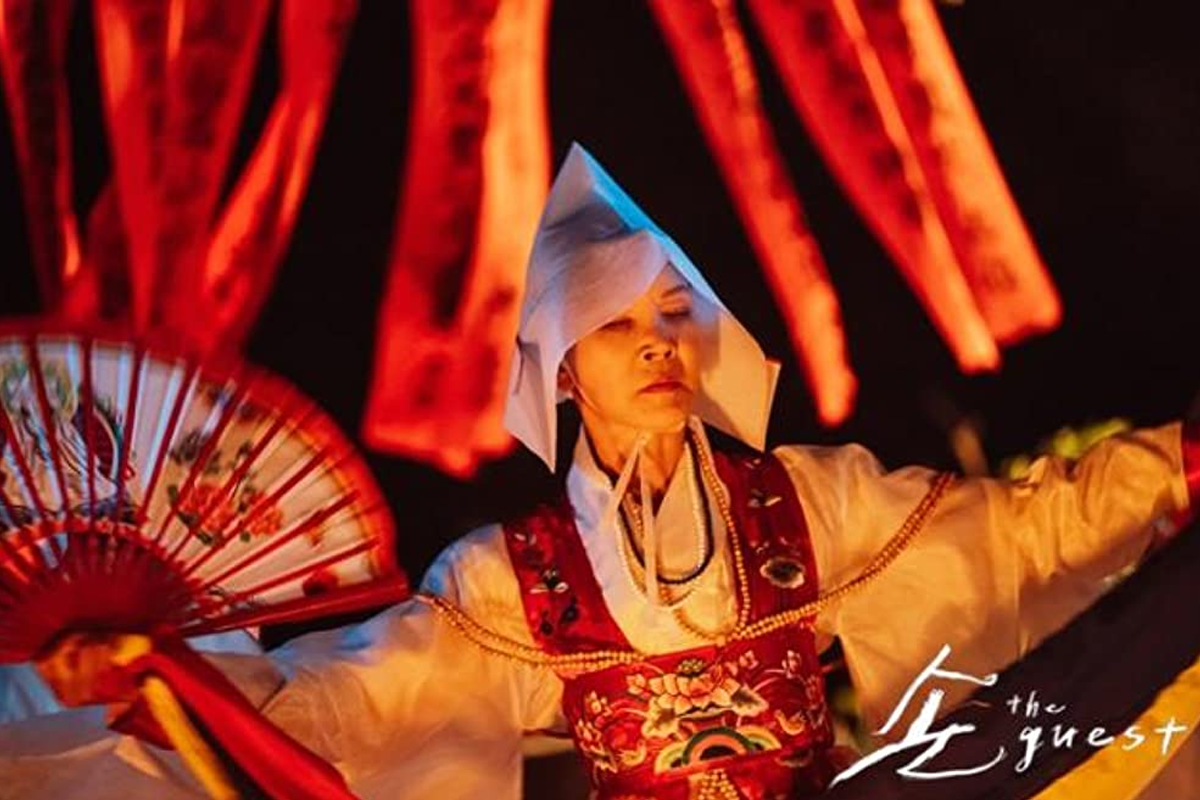
During the later kingdoms of Goguryeo, Baekje and Silla, shamans were recognized as a social class, and mudangs performed rites on behalf of the nation.
The shamans were also entrusted with important tasks, such as predicting the future of the country, giving advice to the king, or treating diseases. As such, the mudang was a socially important class and profession.

However, the importance of the mudang was reduced during the Goryeo Dynasty, which ruled the peninsula from 918 to 1392. During this period, Buddhism became the state religion.
Although the mudang couldn't be seen in the royal court as often as before, shamanism was still an important religion to a large segment of the population.
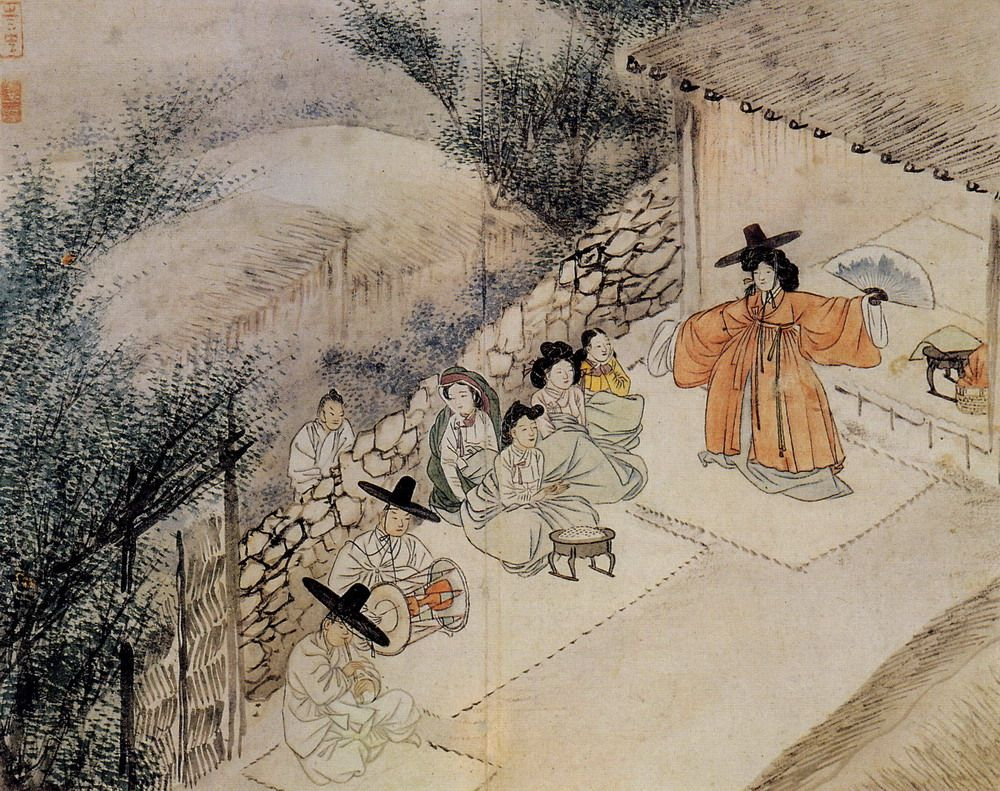
During the succeeding Joseon Dynasty, Confucianism became the state religion, and shamanism was largely looked down upon. Shamanism was considered to be superstitious beliefs practiced by an uneducated population.
Instead, it was the lower classes in society, including the gisaeng, slaves, monks, butchers and entertainers, that continued to use the services of the shamans.
While Confucianism was a study and religion of the elite of society, shamanistic beliefs would instead become part of the culture of the general public.
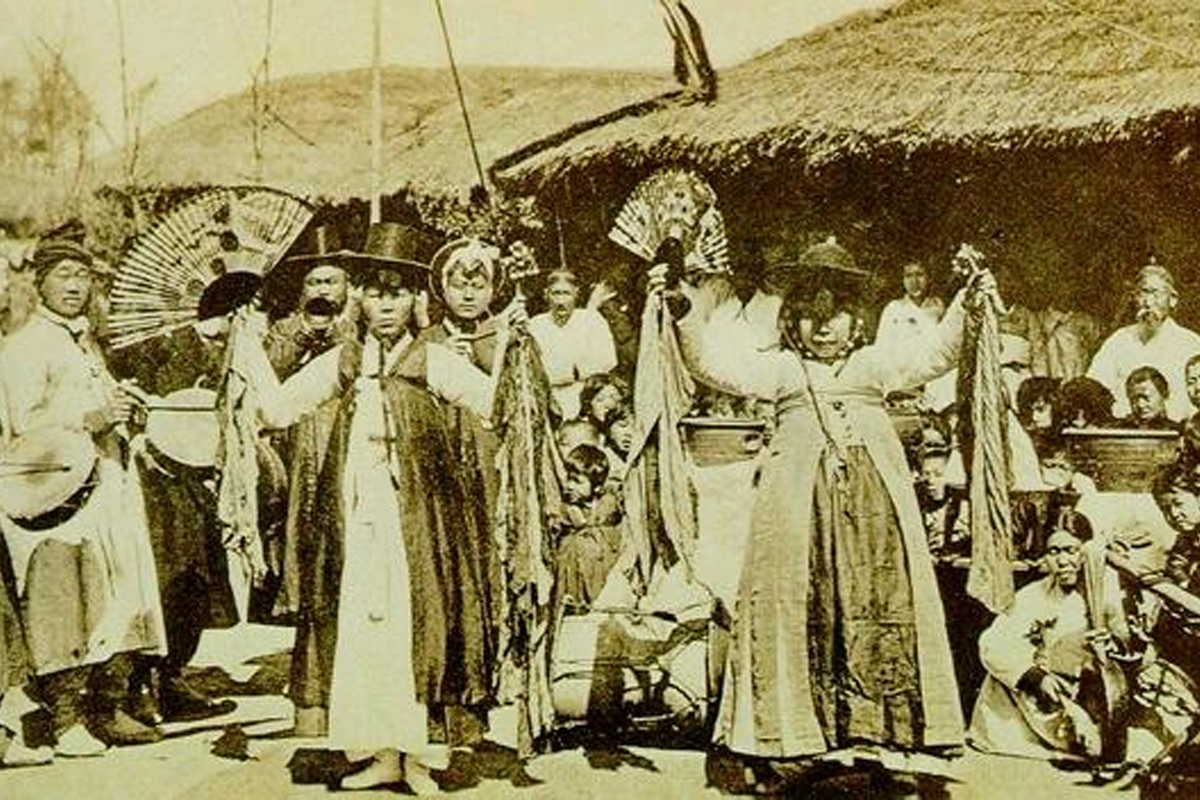
However, shamans were severely oppressed during the Japanese colonial period.
Trying to strip Koreans of their own identity and culture, they treated shamanistic beliefs as superstitions or vulgarities that needed to be suppressed.
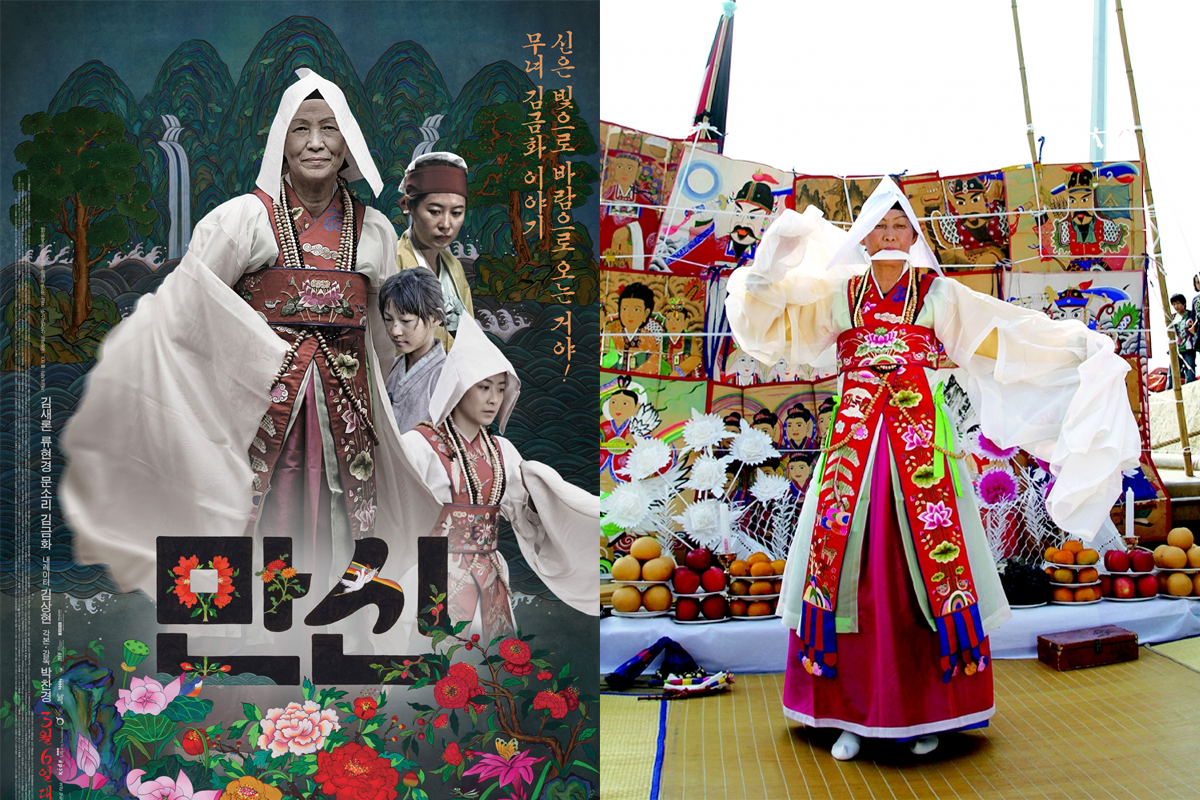 Source: Incehon Ilbo
Source: Incehon Ilbo
Today, there are still mudang shamans in South Korea who help preserve the traditional culture of the country, having learned the rites through proper training and asceticism.
For example, the mudang Kim Keum-hwa was named an important intangible cultural property by the Korean government, and the story of her life was documented in the 2014 film Manshin.
The rites performed by another mudang, Kim Yunsu, have also been recognized by UNESCO as an Intangible Cultural Heritage.
On the other hand, there are also many fake shamans who try to make money by imitating simple spells and performances.
How To Become A Mudang
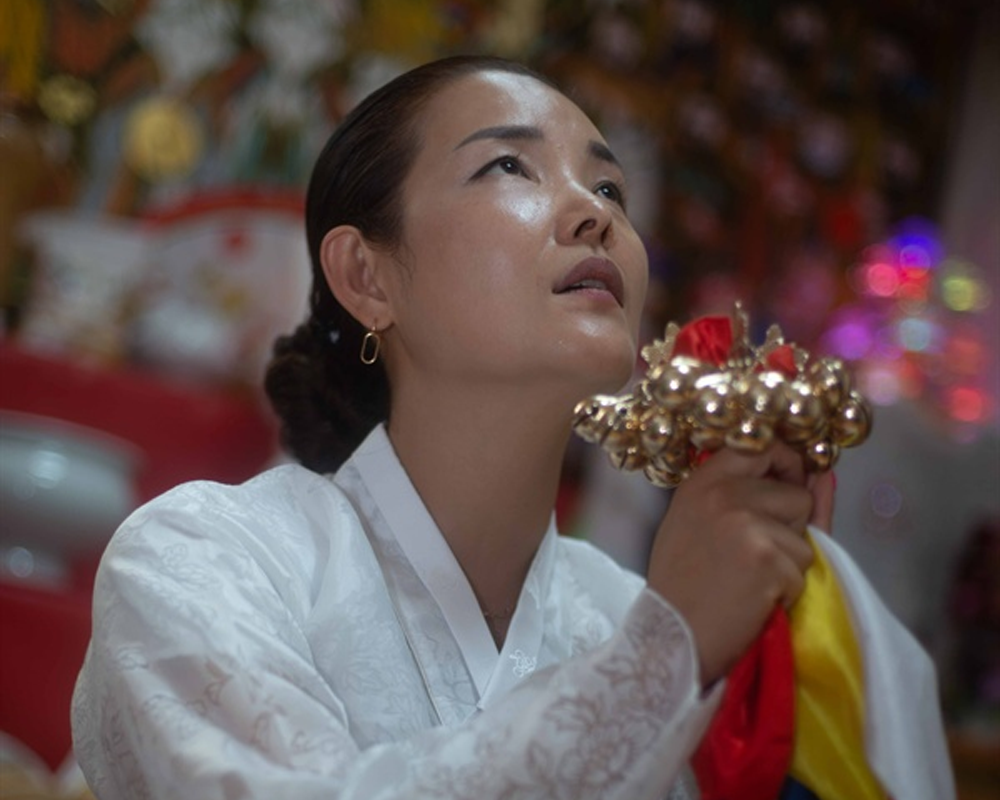 Source: Oh My News
Source: Oh My News
You can't simply choose to become a mudang because you want to. As explained in the movie The Medium, only people with certain abilities will be chosen.
Gods and spirits are said to gather around people with the right abilities. At some point, the mudang will suffer from a condition called shinbyeong (신병) as they are possessed by a god or spirit.
The symptoms of the condition can be quite diverse, and it often takes a psychological and physical toll on the person that is possessed. Many suffer from unknown pain as well as visual and auditory hallucinations.
What's more, these symptoms cannot be treated with modern medicine.
 Source: Kyunghyang Shinmun
Source: Kyunghyang Shinmun
There is not set age for when to become a mudang. Some suddenly experience shinbyeong in middle age, whereas some are still children.
It is said that there is a higher probability for you to suffer from a shinbyeong awakening if your parents or ancestors were shamans.
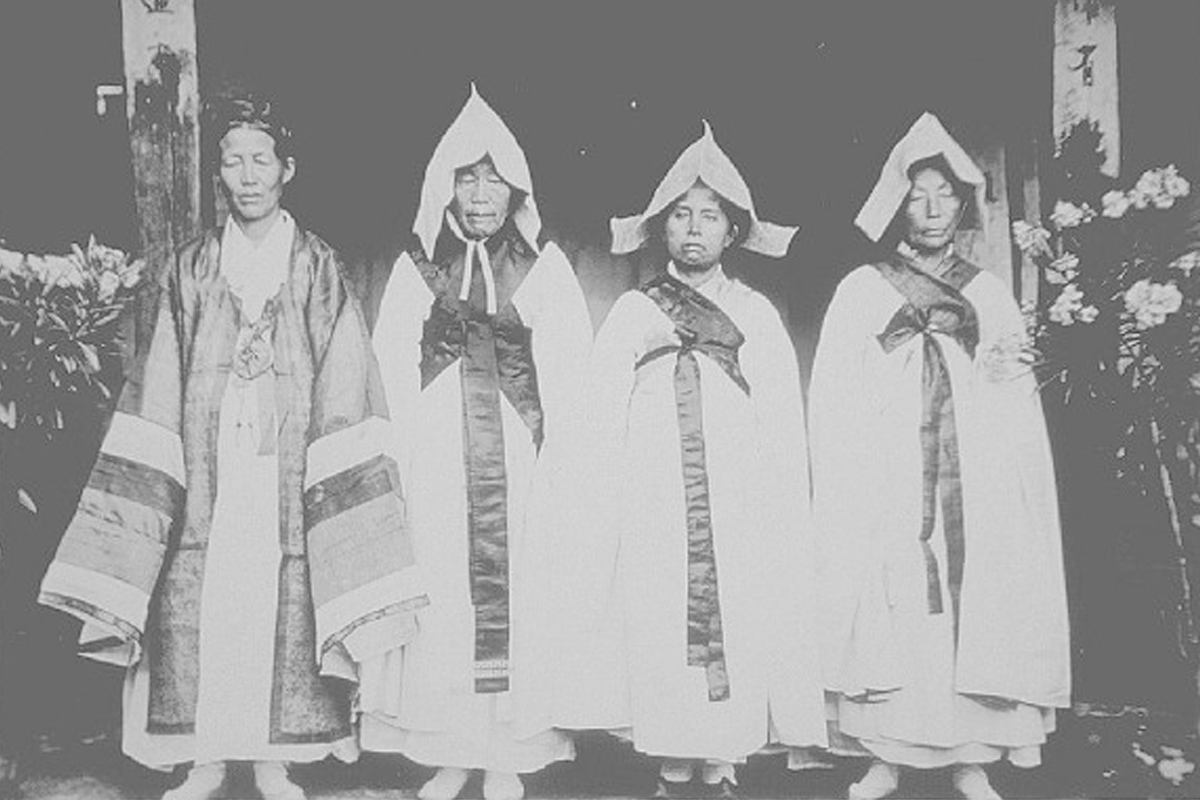
Many consider shinbyeong as a curse rather than a blessing. Having to work as a medium for the gods is in no way an easy task. In modern days, very few want to become a mudang.
In fact, there is a gut that is said to remove divine energy, and offspring of shamans sometimes ask for this nureum gut (누름굿) rather than having to experience shinbyeong.
However, if the rite is not enough to remove the divine energy, most are said to eventually accept their fate.
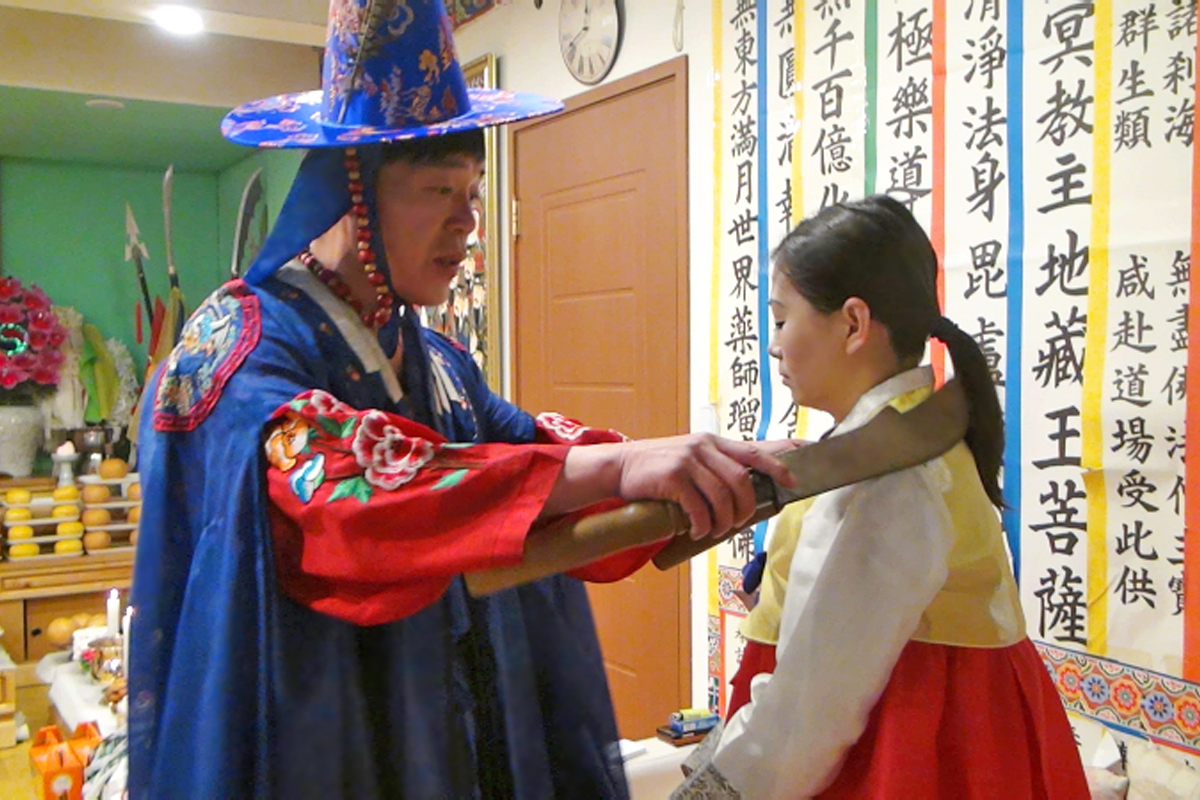 Source:e-won.kr
Source:e-won.kr
Once a mudang has accepted her fate, she is gifted with the power to work as a medium for gods.
The expression shinnaelim (신내림) refers to accepting a god into one's body in order to work as a mudang. This can be done after completing another gut, the naerim gut (내림굿).
The shaman who performs the rite will become the new recruit's shin eomeoni (god mother) or shin abeoji (god father).
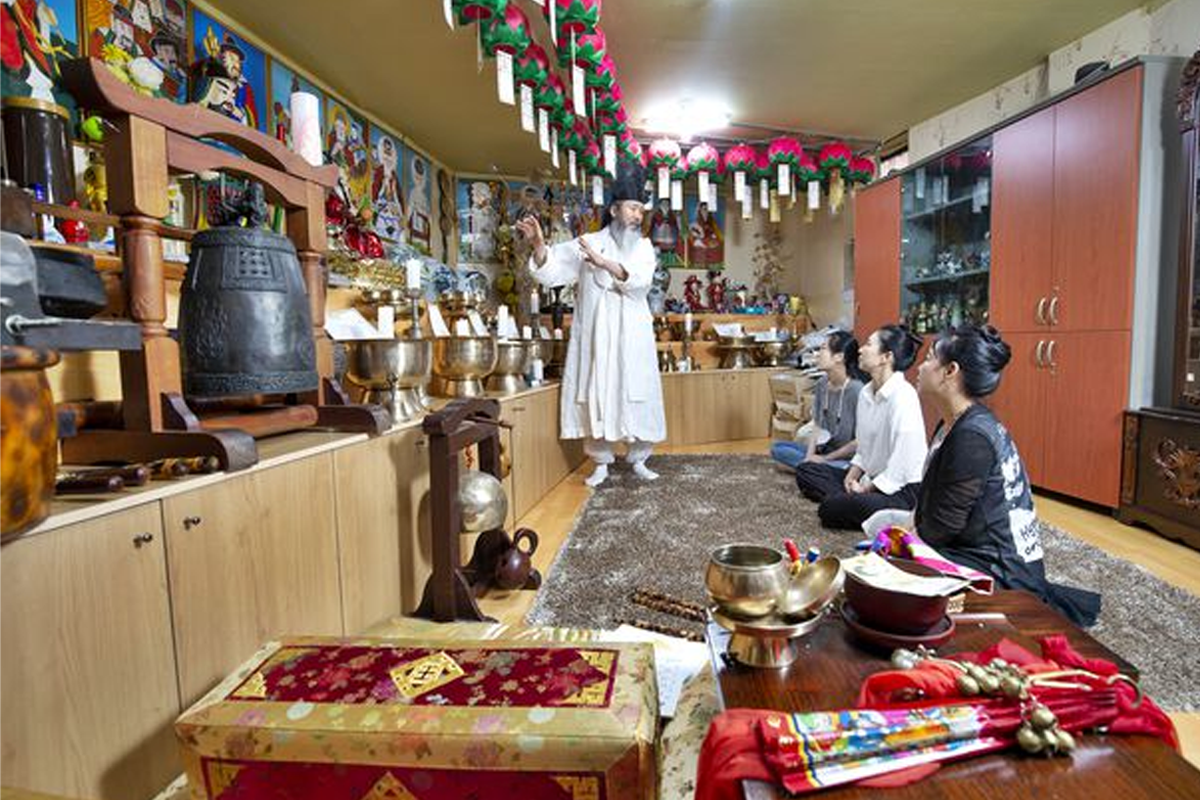 Source: Chosun Ilbo
Source: Chosun Ilbo
After receiving the naerim gut rite, the young mudang will learn various rites and spells from their shin eomeoni or shin abeoji. Recently, a private school teaching the art of the mudang has also opened!

In this article we took a look at the fascinating world of the mudang, learning about Korean shamanism.
You can find out more about religions in South Korea by typing 'religion' in our search bar!

